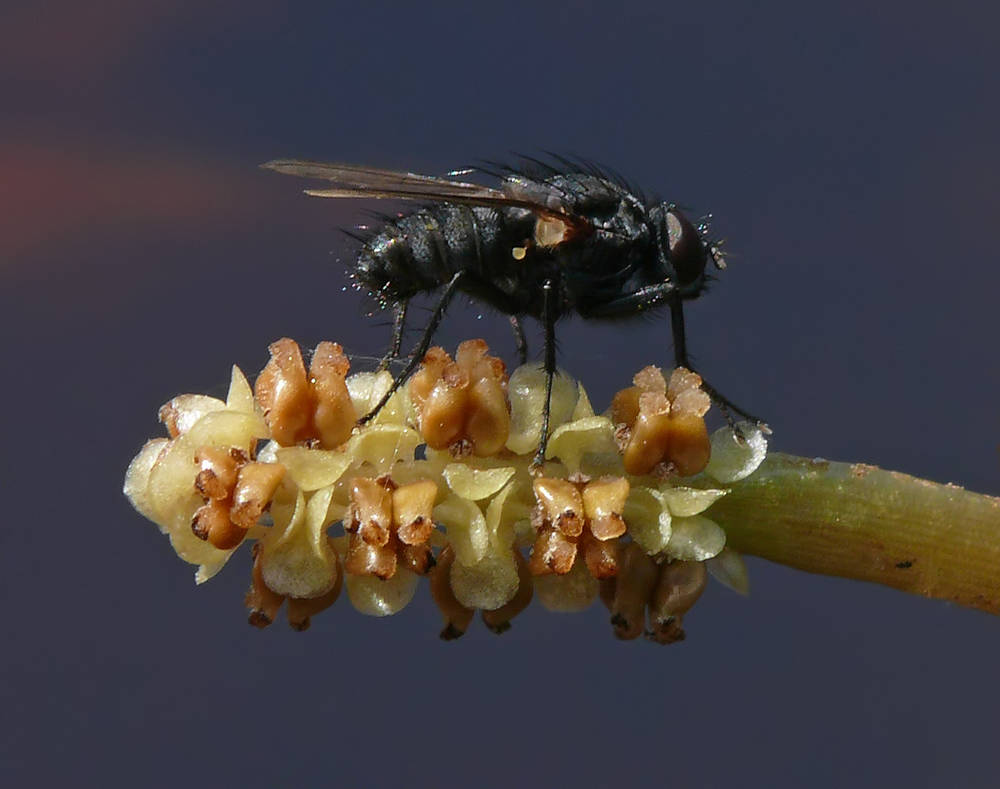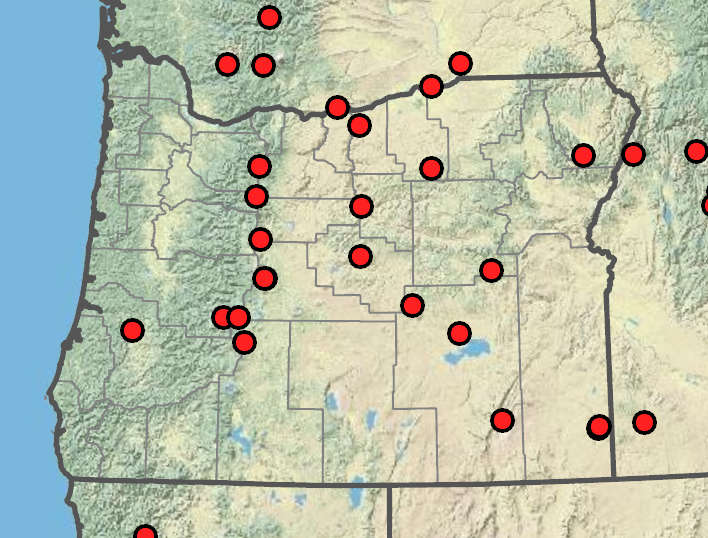Potamogeton alpinus
Potamogetonaceae
northern pondweed, reddish pondweed
pondweed family
terete; to 200 cm; nodal glands absent.
submersed and floating or submersed only.
alternate or nearly opposite, submersed or both submersed and floating, petiolate or sessile;
stipules well developed, sometimes connate and sheathing, sometimes fused to the leaf; if fused to the leaf then often ligulate (extending beyond the base of the blade as a ligule).
elliptic or oblanceolate to obovate or oblonglinear, 40–70(100) × 10–25(40)mm; reddish green;
base gradually tapering to petiole;
tip obtuse or acute;
veins (7)9–13(15);
petioles 0–12 mm.
sessile, attached to stem nodes, not attached to stipules;
stipules (12)15–25(40)mm;
tip blunt;
blades oblong-linear to linear-lanceolate, 45–180(250) × 5–20 mm;
base rounded to cuneate;
margins entire;
tip obtuse or acute; lacunae in 0–6 rows on each side of midvein;
veins 7–9.
emersed;
spikes cylindric, 10–35 mm;
peduncles terminal or axillary; erect, 30– 100(160)mm.
terminal or axillary spikes, cylindric or capitate, rarely paniculate, pedunculate;
bracts 0.
bisexual;
tepals 4 in 1 series;
stamens (2)4, attached to the petals; in 1 series;
anthers distinct, dehiscing longitudinally;
pistils 1 or 4, sessile or rarely short-stipitate.
pedicellate, obovoid; turgid; (2.5)3–3.5 × (1.7)2–2.4 mm, dorsally keeled, laterally keeled or not;
beaks dorsally curved, 0.5–0.9 mm.
drupaceous, 1-seeded.
Potamogeton alpinus
Potamogetonaceae
Ponds, lakes, and slow-moving streams. 1200–2200m. BR, BW, Casc. CA, ID, NV, WA; north to British Columbia, east to Greenland; Eurasia. Native.
Potamogeton alpinus is often red when fresh. This species hybridizes with P. nodosus, P. gramineus, and P. praelongus.
Cosmopolitan in fresh water (rarely brackish) habitats. 3 genera; 2 genera treated in Flora.
Leaves of Potamogetonaceae species are stipular. The submersed leaves are attached to stem nodes or to the stipules. If the leaves are attached to the stipules, they appear to have a ligule above the point of attachment. Reproductive features are important in separating taxa. We strongly recommend that no one collect specimens of Potamogetonaceae that are lacking reproductive structures. North American pondweeds have often been classifed in a single genus, Potamogeton in the broad sense. However, the genus includes two lineages that we recognize at the generic level, Potamogeton in the strict sense and Stuckenia. In Stuckenia, leaf blades are attached to most of the stipule, diverging from it in the upper third, whereas in Potamogeton, blades are free from stipules or attached only in the lower fourth. Submersed leaves of Stuckenia are opaque, channeled, and turgid, whereas those of Potamogeton are translucent, flat, and without grooves or channels.
Nick Otting, Richard Brainerd, Barbara Wilson
- Local floras:
BC,
CA,
OR,
WA
- Local Web sites:
CalFlora,
CalPhotos,
Flora NW,
PNW Herbaria
WildflowerSearch
iNaturalist (observations)
USDA Plants Database
- LBJ Wildflower Center
- SEINet
- Plants of the World Online
- Encyclopedia of Life
- Wikipedia
- Google Image Search
- Local floras:
CA,
OR
- Local Web sites:
CalFlora,
CalPhotos,
Flora NW,
PNW Herbaria
WildflowerSearch
iNaturalist (observations)
- LBJ Wildflower Center
- SEINet
- Plants of the World Online
- Encyclopedia of Life
- Wikipedia
- Google Image Search



